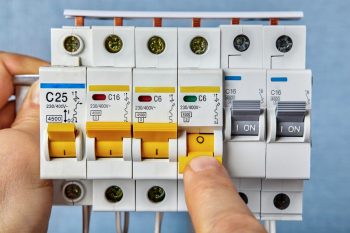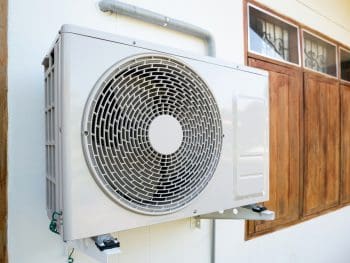
Lighting a water heater might seem like a daunting task, but with the right knowledge and safety precautions, it can be done with ease. This comprehensive guide will walk you through the process, discuss the necessary tools, safety measures, common mistakes to avoid, and troubleshooting tips.
To light a water heater with a lighter, first turn off the gas supply and wait for any gas to dissipate. Locate the pilot light access and turn the gas knob to “Pilot”. While holding down the pilot gas valve or button, use a long-reach lighter or fireplace matches to ignite the pilot light. Release the pilot knob or button, and turn the knob from “Pilot” to “On”. Replace the pilot light access cover if there is one. Always ensure safety by keeping the area well-ventilated and free from flammable materials.
Understand Your Water Heater
Before delving into the lighting process, it’s crucial to understand your water heater. Water heaters come in various types, but if you’re using a gas water heater, it will likely have a pilot light that needs to be manually ignited. Some newer models might have an automatic ignition system.
To identify if your water heater is designed to be lit with a lighter, first determine the type of ignition system it has. If your water heater doesn’t have an igniter button and requires manual lighting, you’ll need a long-reach wand lighter or fireplace matches to relight the pilot.
Tools Required
You will need a long-reach lighter, which can be a wand lighter or fireplace matches. These tools allow you to reach the pilot light without getting too close to the flame.
Step-by-step Instructions
Here’s a step-by-step guide on how to light your water heater with a lighter:
- Turn off the gas supply: Locate the gas shut-off valve on the water heater and turn the knob to the “Off” position. Wait for about 5 minutes for any gas to dissipate.
- Locate the pilot light access: Open the door or cover over the pilot light access.
- Turn the gas knob to “Pilot”: Press and hold down the gas knob or button. This will start the flow of gas so you can light the flame.
- Light the pilot burner: While holding down the pilot gas valve or button, use a long reach lighter or fireplace matches to ignite the pilot light.
- Switch the knob back to “On”: Release the pilot knob or button, and turn the knob from “Pilot” to “On”.
- Replace the access panel: If your water heater has a pilot light cover, replace it.
Safety Measures
Safety is paramount when dealing with gas appliances. Here are some safety measures to consider:
- Ventilate the area: Ensure that the area surrounding the water heater is well-ventilated to avoid the accumulation of gas.
- Avoid flammable materials: Keep flammable items, such as paper, cloth, or cleaning liquids, away from the water heater to prevent them from catching fire.
- Turn off the gas supply to your water heater and turn the control valve to the “off” position.
- If you smell gas at any point during the process, stop immediately and call a professional.
Troubleshooting Common Issues
You may encounter some common issues when attempting to light your water heater. Here are some troubleshooting tips:
- If there is residual gas inside the lines, it can prevent the pilot light from igniting. Wait a few minutes to let the gas disperse.
- A clogged pilot tube can prevent the pilot light from igniting. Try cleaning the pilot tube.
- A faulty thermocouple can prevent the pilot light from staying lit. Consider replacing it.
- If the automatic igniter isn’t working, consider replacing it.
Maintenance Tips
Proper maintenance extends the lifespan of your water heater. Here are some tips:
- Regularly inspect the pilot light.
- Flush your water heater every six months to remove sediment buildup.
- Clean the burner ports and the tip of the pilot light to ensure proper gas flow and ignition.
- Inspect the gas valve for any signs of damage or wear.
- Use the vacation setting when away.
In conclusion, lighting a water heater with a lighter is a task that requires caution and knowledge. Always follow the manufacturer’s instructions and safety precautions, and don’t hesitate to consult a professional if you’re unsure.
Frequently Asked Questions
What should I do if my water heater doesn’t have a “Pilot” setting?
If your water heater doesn’t have a “Pilot” setting, it might have an automatic ignition system. In this case, you don’t need a lighter to ignite the pilot light. Instead, you should follow the manufacturer’s instructions for lighting the pilot light.
How often should I check the pilot light on my water heater?
It’s a good practice to check the pilot light on your water heater at least once every three months. This allows you to ensure it’s working correctly and to troubleshoot any potential issues before they become major problems.
What color should the flame of the pilot light be?
The flame of the pilot light should be blue with a small yellow tip. If the flame is mostly yellow or orange, it might indicate a problem with the gas-air mixture, and you should consult a professional.
What should I do if I can’t light the pilot light after several attempts?
If you can’t light the pilot light after several attempts, there might be a problem with the gas supply or the pilot light assembly. In this case, it’s best to call a professional to avoid potential safety hazards.
What is the “vacation setting” on my water heater?
The “vacation setting” on your water heater lowers the temperature of the water while you’re away, saving energy. When you return, you can turn the setting back to normal to heat the water to the desired temperature.












